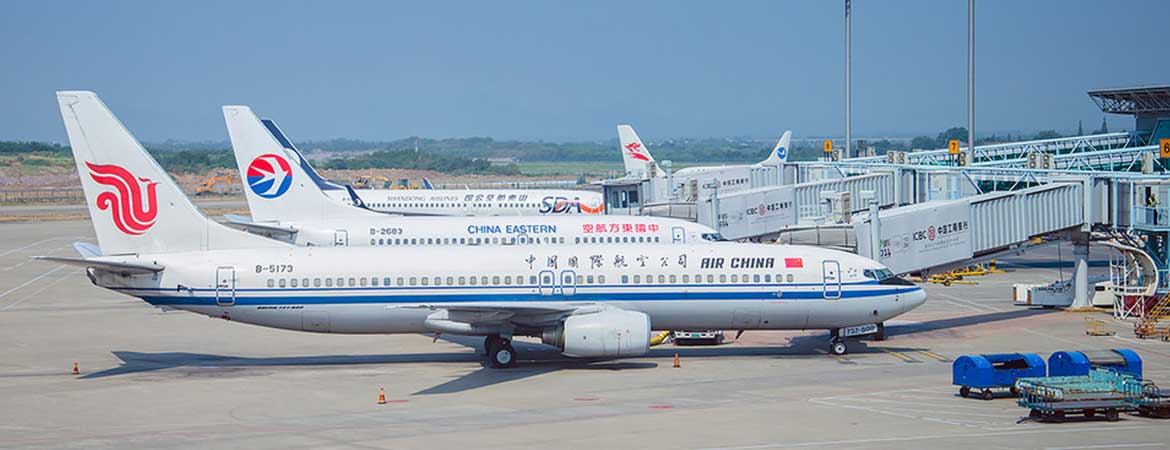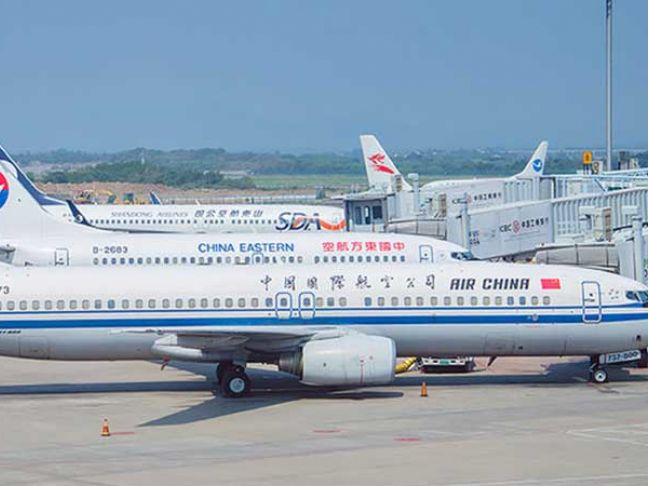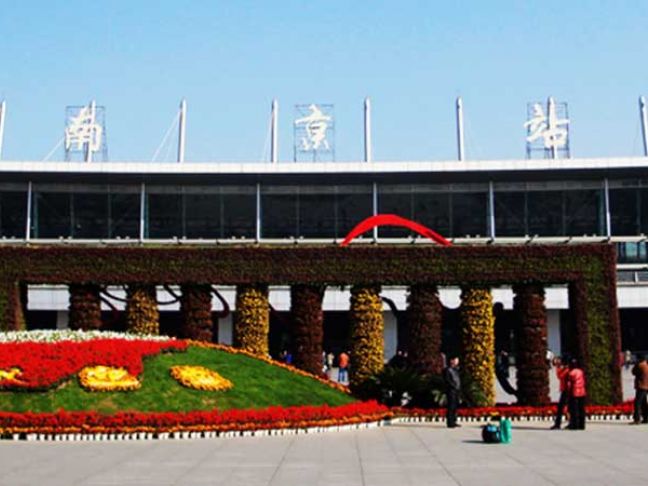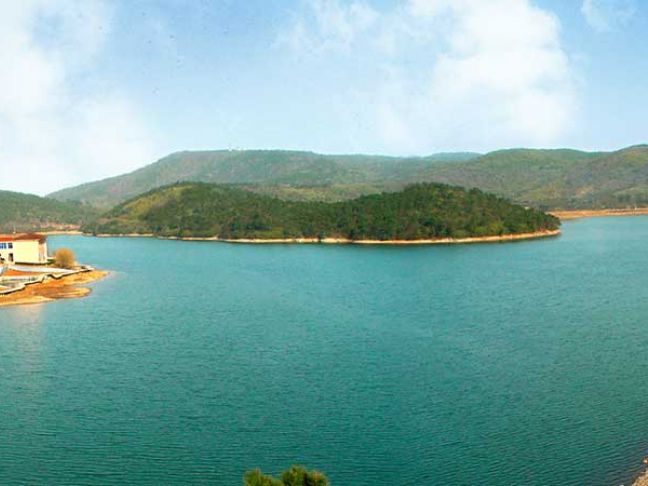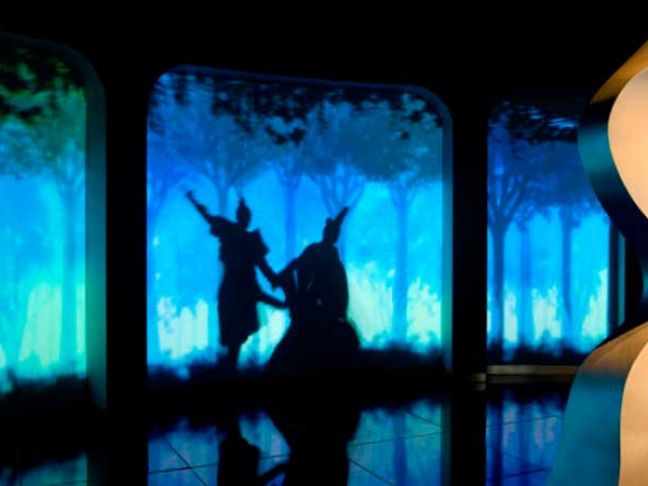Traffic of Nanjing
Get to Nanjing By Plane:
Nanjing's airport, Lukou International Airport, serves both national and international flights. In 2010, the airport handled 12.5305 million passengers. It was ranked 14th among 126 civil airports in China in terms of yearly passenger transport, and 10th for yearly cargo transport. The airport currently has 85 routes to national and international destinations, which include Korea, Thailand, Malaysia, Singapore and Germany. The airport is connected by a 29-kilometre highway directly to the city center, and is also linked to various intercity highways, making it accessible to the passengers from the surrounding cities.
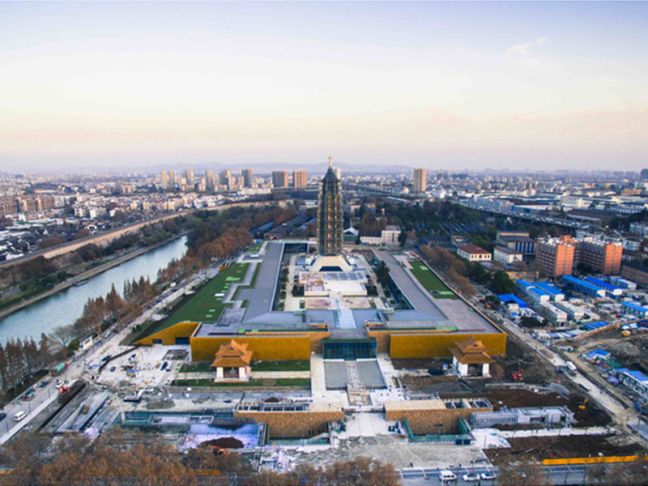
Get to Nanjing By Train:
Nanjing is the transportation hub in eastern China and the downstream Yangtze River area. Different means of transportation constitute a three-dimensional transport system that includes land, water and air. As in most other Chinese cities, public transportation is the dominant mode of travel of the majority of the citizens. The city now has five bridge or tunnel crossings spanning the Yangtze, which are tying districts north of the river with the city centre on the south bank. See also Transport in Nanjing.

Nanjing is an important railway hub in eastern China. It serves as rail junction for the Beijing-Shanghai (Jinghu) (which is itself composed of the old Jinpu and Huning Railways), Nanjing–Tongling (Ningtong), Nanjing-Qidong (Ningqi), and the Nanjing-Xian (Ningxi) which encompasses the Hefei–Nanjing Railway.
Nanjing is connected to the national high-speed railway network by Beijing–Shanghai High-Speed Railway and Shanghai–Wuhan–Chengdu Passenger Dedicated Line, with several more high-speed rail lines under construction.
Among all 17 railway stations in Nanjing, passenger rail service is mainly provided by Nanjing Railway Station and Nanjing South Railway Station, while other stations like Nanjing West Railway Station, Zhonghuamen Railway Station and Xianlin Railway Station serve minor roles. Nanjing South Railway Station, which is one of the 5 hub stations on Beijing-Shanghai High-Speed Railway, has officially been claimed as the largest railway station in Asia and the second largest in the world in terms of GFA (Gross Floor Area).
The city of eight million is a stop on the five-hour high-speed rail route between Beijing and Shanghai. Yangtze River Delta cities which are consist of Nanjing, Shanghai, Hangzhou and other cities. It is easy to travel among these cities in only one and a half hours by high-speed rail trains.
Airport to Downtown of Nanjing:
Airport Line 1 (East Line): from the first flight in the morning to the last flight at the end of the day
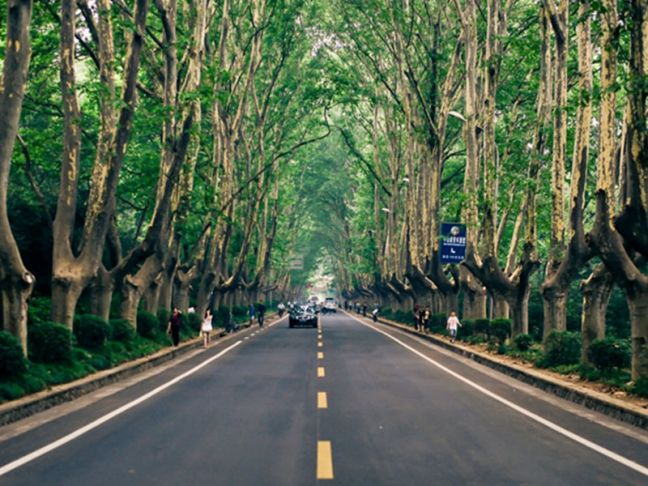
You can get off at the following stations: Yuhua Square, Qinhuai District people's Government, Xihua Gate, Nanjing Railway Station.
Airport Line 2 (West Line): from 9:30 to 22:30
You can get off at the following stations: Cuipingshan Hotel (performed by Airport Line 1 after 22:30), Nanjing South Railway Station, Zhonghuamen (former Zhonghuamen Long-distance Bus Station).
Former Zhonghuamen Long-distance Bus Station to Airport:
Airport bus starts from the former Zhonghuamen Long-distance Bus Station, stopping at Nanjing South Railway Station, to the airport. The time of airport bus departuring from Nanjing South Railway Station is from 6:15 to 20:15 every day, with being one every 20 minutes. The former Zhonghuamen Long-distance Bus Station is located next to the Zhonghuamen Metro Station. Take Metro Line 1 to Zhonghuamen Metro Station, then take No.2, 38, 16, 39, 49, 111, 116 Bus to West Street or Runtai Market. The departure time of bus is 06:00-21: 00, with being one every 20 minutes.

Nanjing Railway Station East Square to Airport:
Taking No.17, 36, 44, 59, 71, 97, 141, 309 bus can directly reach Nanjing Railway Station East Square bus departure point, stopping at 221 Longpan Road. Or you can take metro or one of the buses -- No.27,34,37,49,306 bus to Park Road or Changfu Street, then you can reach Longpan Road Station. The departure time is from 05:40 to 21:00, with being one every 20 minutes. Every bus that stops at 221 Longpan Road will be 10 to 15 minutes later.

Nanjing South Railway Station (6:00-22:00) - Lukou International Airport (6:40-22:00)
The Nanjing Bureau of Ethnic and Religious Affairs 南京市民族宗教事务局 Tel:86-25-83635707 Religious Service Sites
| Shuttle Bus from downtown to airport(RMB 20/person) | ||||
| Departure Station | Details | Total Distance | ||
| Nanjing South Bus Station (inside Nanjing South Railway Station) | 6:00-21:00, every 20 minutes | 40 minutes | ||
| East Plaza of Nanjing Central Station | 5:40-21:00, every 20 minutes, stop at No.221 Longpan Zhong Road (龙蟠中路) | 1.5 hours | ||
| Hanzhong Men (汉中门, Metro Line 2 Hanzhong Men Station) | 5:40-21:00, every 20 minutes, stop at Hexi Wanda Plaza (Metro Line 2 Jiqingmen Dajie Station) | 1 hour | ||
| Shuttle Bus from airport to downtown(RMB 20/person) | ||||
| Line | Running Period | Stops in between | ||
| Line 1 | available from the landing of first craft till the departure of last craft, every 20 minutes | Yuhua plaza (雨花广场), Qinhong Qiao (秦虹桥), Xihuamen (西华门) and Nanjing Central Station (南京站). | ||
| Line 2 | available from the landing of first craft till 22:30, every 20 minutes | Cuipingshan Hotel (翠屏山宾馆), East Olympic Stadium (奥体东), Wanda Plaza (万达广场) , Shuixi Men (水西门), Hanzhong Men (汉中门) | ||
| Line 3 | available from the landing of first craft till 22:30, every 20 minutes | Nanjing South Railway Station | ||
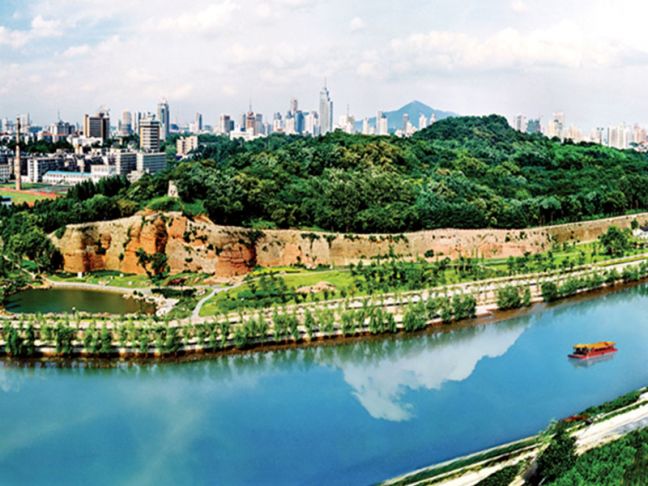
Nanjing Lukou International Airport (www.njiairport.com) is just 35 km away from downtown Nanjing. It has links with over 20 international cities and more than 130 routes. Nanjing City has a number of airport shuttle rides and also a fast, regular and reliable metro link which is really great value for money value and can take you from the airport to the city. Visit the official website or contact +86 96 8890 (24 hours) for more information.
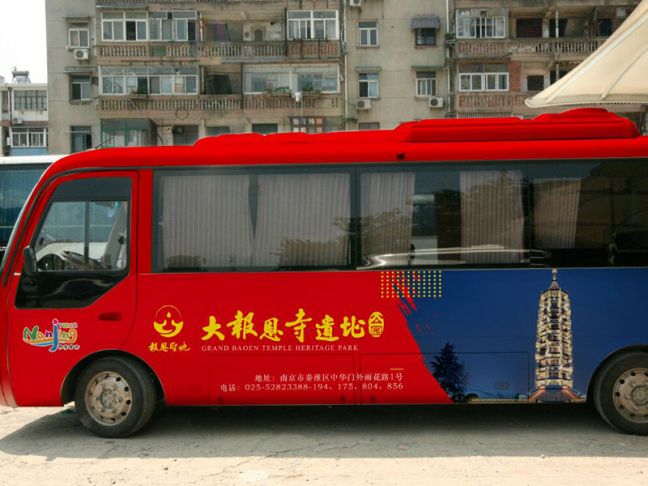
Leisure Cycling Track
The entrance is at the main entrance of the Pipa Lake Park(琵琶湖公园) on Zhiwuyuan Road (植物园路). Just take a taxi there (address: 植物园路琵琶湖公园) and start your 22.9 kilo meters'green cycling journey. The track is separated into two sides at 'Nanjing's Post Office in the 20th Century'but gets merged again at 'Tomb of Fanhongxian' where the cycling track is ended.
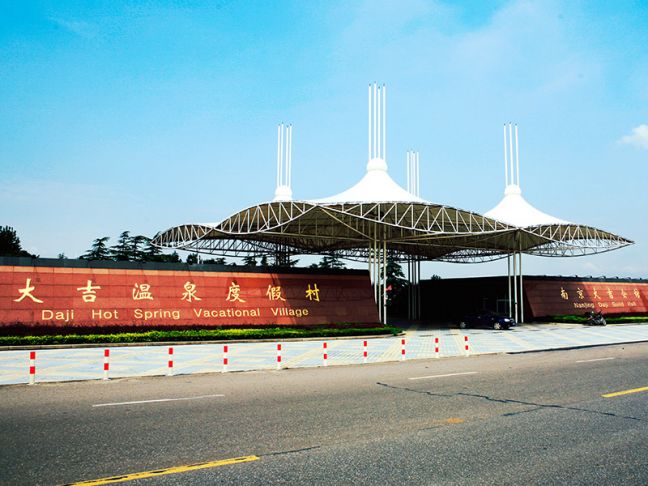
Professional Cycling Track
Part of the Zijin Mountain is ideal for professional cyclists due to its various slopes. The track starts from East Entrance of Huanling Road(环陵路) which is close to the Tomb of Fanhongxian. Take a taxi there (address: 环陵路东入口近范鸿仙墓), follow the green signs and head North for 9 kilometers to the North Entrance of Huanling Road, the end stop of the track.
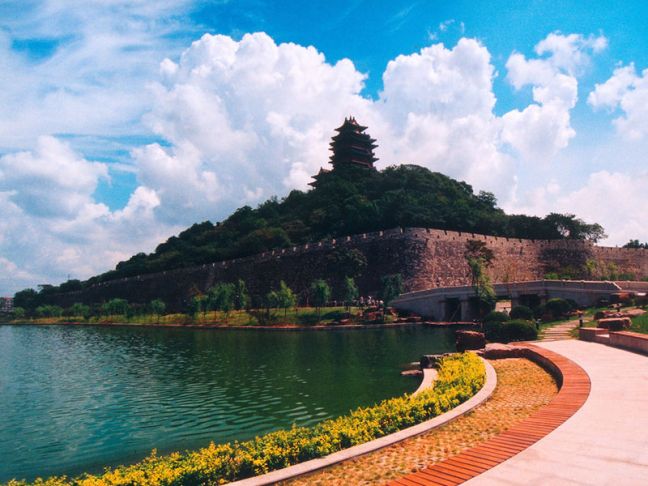
The city also boasts an efficient network of public transportation, which mainly consists of bus, taxi and metro systems. The bus network, which is currently run by five companies (Nanjing Gongjiao, Zhongbei, Argos, Xincheng and Xinningpu), provides more than 370 routes covering all parts of the city and suburban areas. Nanjing Metro Line 1, started service on May 15, 2005. Line 2 and the extension of Line 1 officially opened to passenger service on May 28, 2010. The city is planning to complete a 655 km (407 mi) long Metro and light-rail system by 2030. The expansion of the Metro network will greatly facilitate the intracity transportation and reduce the currently heavy traffic congestion.

By Metro:
Four metro lines stitch the city together with more than 50 stations. Trains are new and clean. A subway ride costs RMB 2-9 (US$0.3-1.4).
It is generally easy to find an empty taxi downtown but avoid rush hours (6:30-8:00 a.m., 5:00-7:00 p.m.). Drivers available for hire light their taxi lamps red (while green means the taxi is not available).The flag-down rate is RMB 9 (US$ 1.4) plus RMB 2 (US$0.3) fuel surcharge.
By Taxi:
Taking a taxi can make your travelling convenient. It is best to take a taxi that is licensed and metered. There are a lot of taxis in Nanjing and it is quite an inexpensive means of transportation (starting price: 9 Yuan). Usually taxi drivers do not speak English, so be sure to have your destination written in Chinese. It is also helpful to have a Chinese and English map.
By Bus:
There are five travelling routes in Nanjing which benefit visitors a lot!
As is shown below, visitors will feel free to look around by taking a tour bus.
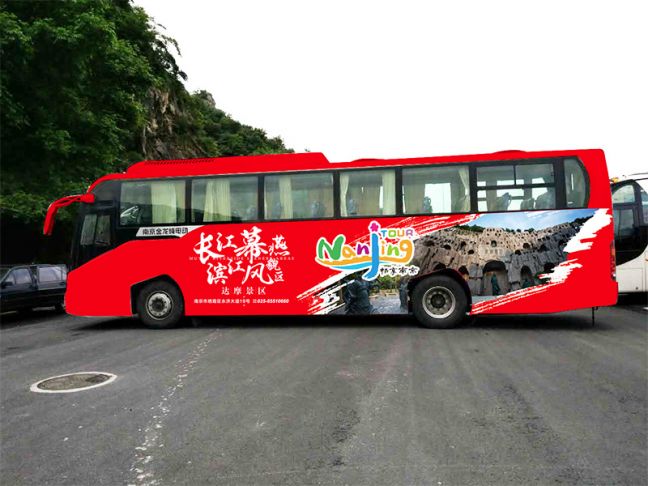
Tour Line 1 游1线
玄武湖公园——鼓楼——鸡鸣寺——总统府——明故宫——美龄宫——海底世界——中山陵
Tour Line 1 (stop at): Xuanwu Lake Park→Gulou→Jiming Temple→Presidential Palace→Nanjing Ming Palace→Meiling Palace→Underwater World→Dr. Sun Yat-sen's Mausoleum
Tour Line2 游2线
雨花台一中华门城堡——夫子庙——总统府——明故宫——明孝陵——海底世界——中山陵——水榭——灵谷寺公园
Tour Line 2 (stop at): Yuhuatai (Rain Flower Terrace)→Zhonghua Gate Citadel→Confucius Temple→Presidential Palace→Nanjing Ming Palace→Ming Xiaoling Mausoleum→Underwater World→Dr. Sun Yat-sen's Mausoleum→Shuixie (Waterside Pavilion)→Linggu Temple Park
Tour Line 3 游3线
红山动物园——紫金山——廖仲恺墓——明孝陵——海底世界——中山陵——水榭——灵谷寺公园
Tour Line 3 (stop at): Hongshan Forest Zoo→Purple Mountain→Liao Zhongkai's Tomb→Ming Xiaoling Mausoleum→→Underwater World→Dr. Sun Yat-sen's Mausoleum→Shuixie (Waterside Pavilion)→ Linggu Temple Park
Tour Line 4 游4线
石头城——清凉山——雨花台
Tour Line 4 (stop at): Stone City→Qingliang Hill→Yuhuatai (Rain Flower Terrace)
Tour Line 5 游5线
阳山碑材
Tour Line 5 (stop at): Yangshan Hill Stele
By the end of November 2016, Lukou International Airport has added 8 new airlines and 18 new regular routes, including 7 international flights from Nanjing to Los Angeles, Bangkok, Fukuoka, etc.
Currently, the airport provides transportation services for passengers and cargo covering 97 large and medium-sized cities at home and abroad in an effort to build the flight network that connects Asia, Europe, the United States and Australia. Besides, while more international routes are expected to be opened within 5 years, the flights below will be taken into account as prior routes: Nanjing-Dubai-New Delhi-Istanbul; Nanjing-Rome-Paris-Helsinki; Nanjing-Melbourne; Nanjing-New York. And beyond that, a direct air route between Nanjing and Vancouver Canada was opened by China Eastern Airlines on December 20, 2016.
Nanjing Lukou International Airport to About 30 Surrounding Cities and Counties Of Nanjing
There are frequent airport shuttle buses from Nanjing Lukou International Airport to about 30 surrounding cities and counties of Nanjing, such as Wuxi, Yangzhou, Changzhou and Zhenjiang. Passengers can buy tickets at the airport terminal.
Two Railway Stations in Nanjing
Two railway stations are available in Nanjing. The old one is called Nanjing Railway Station located in Nanjing's urban core, facing Xuanwu Lake. At present, about 70 trains depart from Nanjing Railway Station every day. Most of them are conventional trains (express, fast or regular trains), and high-speed services for travelling to Shanghai Station and Shanghai Hongqiao Railway Station are also available here.
Built in 2011, the new Nanjing South Railway Station is mainly for high-speed trains to Shanghai, Suzhou, Hangzhou and other surrounding cities.
The highway and road system in Nanjing has also gone through rapid expansion, and meanwhile long-distance bus stations could also be found in Nanjing. Among them, Nanjing Zhongyangmen Long-distance Bus Station is the major one running passenger lines to Zhejiang, Hunan, Guangdong, Beijing and other provinces and regions.
Taxi in Nanjing
Given Nanjing's reasonable taxi fares, it's very cost-efficient to hail a cab. Fares are charged according to the taximeters plus applicable surcharges starting from 9 RMB within 3km, and an extra of 2.4 RMB/km beyond 3km.Traveling at peak times is not recommended as you may be caught in a traffic jam. If you take a taxi after 11pm at midnight, you may be charged of an extra fee of 0-3 RMB /km.
Self-drive Car in Nanjing
In recent years, more and more tourists prefer self-driving for leisure and business. It is flexible and convenient, and allows them to enjoy the breathtaking scenery of Nanjing while driving along the road.
Walking Route in Nanjing
If you want to get around Nanjing on foot, you may try the following walking route.
Lingyuan Road – Dr. Sun Yat-sen's Mausoleum, Xiaoling Tomb of Ming Dynasty – Nanjing City Wall of the Ming Dynasty – Nanjing Dapaidang Restaurant
Starting from Lingyuan Road in the morning, you can walk to Dr. Sun Yat-sen's Mausoleum or take the tour bus. It's recommended to visit Dr. Sun Yat-sen's Mausoleum first and Nanjing City Wall of the Ming Dynasty later.
Tips: No tickets are needed to enter Dr. Sun Yat-sen's Mausoleum, but it's not open on Mondays.
You'd better get up early in the morning so that you could be able to get to Zhonghuamen City Wall before 4pm, and then you can indulge in the well-preserved ancient city wall for 1-2 hours.
Nanjing Dapaidang Restaurant is a must-go place for tourists. It's especially popular with the local residents for its lively environment, delicious cuisines and the regular classical performances of Suzhou Pingtan (a musical/oral performance art form popular in southern Jiangsu, northern Zhejiang, and Shanghai, which is combined of story-telling and ballad singing in Suzhou dialect.). Besides, there are a bunch of superb restaurants, and you could always find one that is close to the scenic area you're visiting.
Most tourist attractions in Nanjing provide high quality and responsive services for the disabled. Below is a list of special services offered by some major tourist spots.
Nanjing Museum
Wheelchairs, crutches and other special facilities for the disabled are available in Nanjing Museum. Likewise, it is equipped with a handicapped restroom. If you need any help, a youth volunteer team would always be at your service.
Zhongshan Mountain Scenic Area
In the visitor center, the handicapped may have easy access to a checkroom for small items, medical assistance, wheelchairs, umbrellas, crutches, cell phone charging, sewing kits, public telephones and other convenient services.
Presidential Palace
The handicapped with valid credentials are allowed to enter the Presidential Palace for free.

